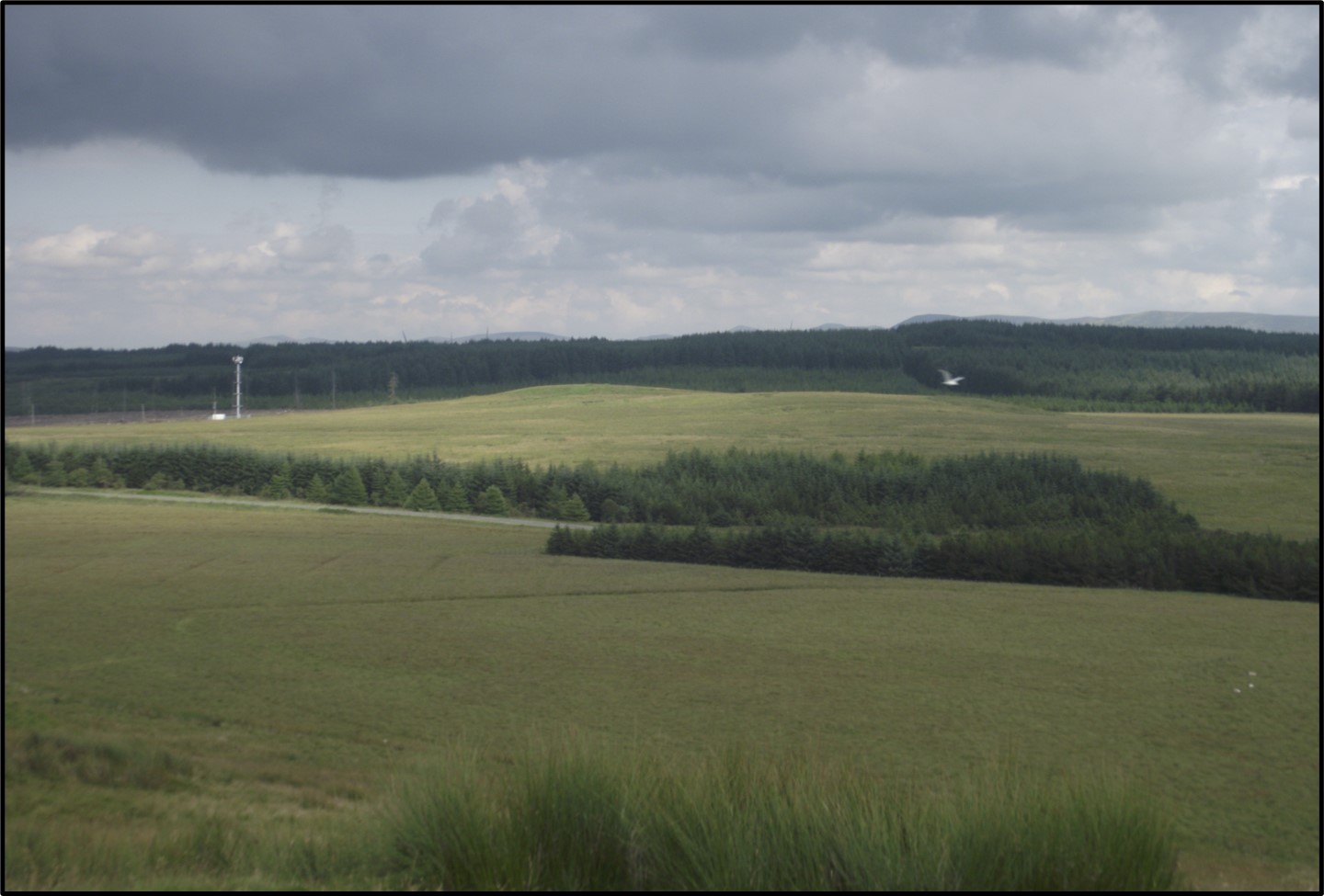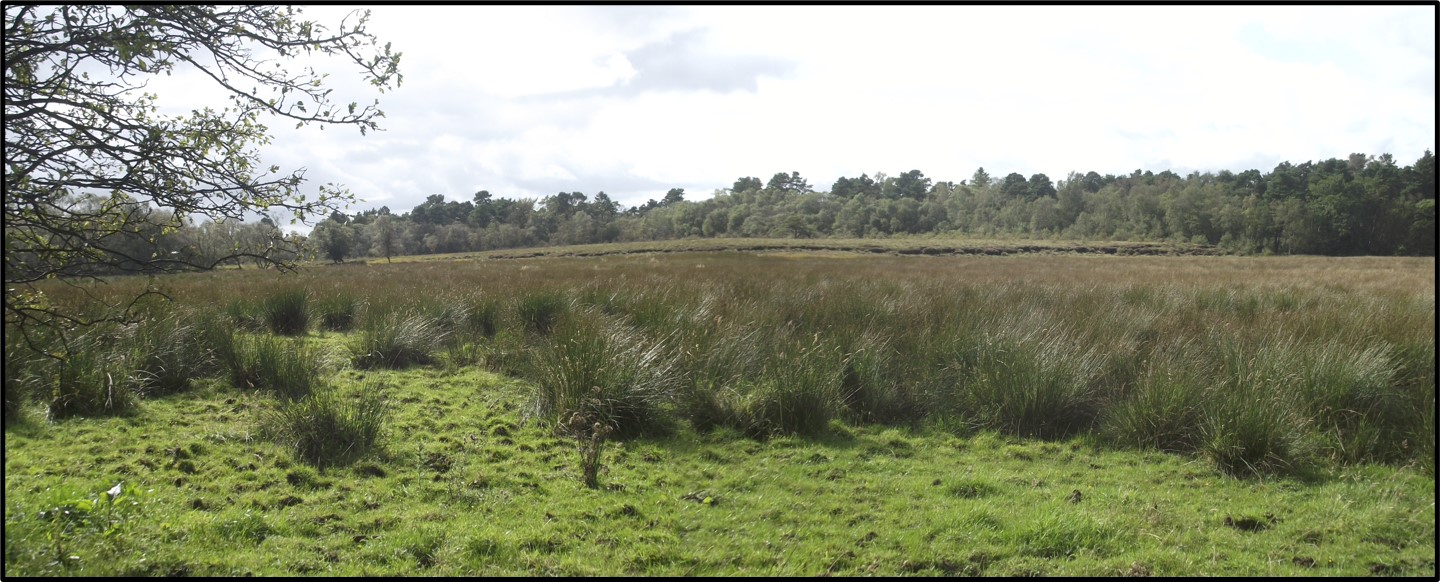
Another strange tradition belongs to Tamethemoon, which I was piously told when a child. Here the famous witches of Calder ascended to the moon, flying on broomsticks. Up they went to tame or turn the moon each eight and twenty days, fearing that under the influence of the new calendar of 1582 the moon would go wrong and fail to reappear in the heavens for ever, to the sad loss of mankind 1
This much-repeated local story is assumed to be a tall tale but it could have roots in the real lives of women who were accused of witchcraft at Calder and Carnwath. The case of Margaret Watson and Jean Lachlane was heard by the Privy Council, then the highest court in Scotland, in January 1645 and there is a lengthy account of their trial2. The trial record contains outlandish detail of Margaret’s apparent confession of flying to witches’ meetings and would have been widely known among local people of the time.
The kirk session needed two things from people accused of witchcraft: a confession and the names of more people to accuse. Witches’ meetings provided both so the brutal interrogations often focussed on them. These meetings, also known as the witches’ sabbath, probably weren’t real events 3: it is far more likely that people like Margaret created their stories to appease interrogators and end their ordeal.
Margaret was originally accused through the confession of Helen Stewart, a woman who had been tried and executed for witchcraft at Calder. Hew Kennedie, minister at Calder, wrote to James Douglas, minister at Carnwath, to report that Helen had attended witches’ meetings with women from Carnwath parish. Margaret was subsequently detained, quickly confessed and named other women who had attended the supposed witches’ meetings with her.
The locations of the meetings are recorded by the Privy Council as Carnwath and Lanark kirks, Neveinseat (modern Levenseat) and Tormonquheill (now Tormywheel) 2, 4, 5. Levenseat and Tormywheel are hills on the border of Carnwath and Calder parishes. We don’t know where Margaret lived, but we do know that her co-accused, Jeane Lachlane, was from Eardhouses 2 (now known as Easter and Wester Yardhouses 4, 5), northeast of Carnwath towards Calder and about five miles from Tormywheel. Tamethemoon, from the legend, is a place that is now known as Turniemoon, and is about five miles from Tormywheel Hill.

Women were often pressed to reveal how they travelled to meetings and in Margaret’s confession she said that she flew to witches’ meetings on a bottell of strae ‘a bundle of straw’ and the others she named also flew: Mailie Paterson on a cat; Jonet Lockie on a cockerel; her aunt Margaret Watson on a thorn tree; and Jeane Lachlane on ane bourtrie ‘an elder tree’ 2.
No doubt word of witches flying around the area in the dead of night on cats and cockerels and trees would have spread quickly among local people!
Margaret and Jeane were tried at Lanark on the 31st of December 1644, declared guilty by the Privy Council on the 2nd of January 1645 and then executed together at Carnwath. James Douglas the minister at Carnwath attended their execution and on the 16th of January 1645 reported to the presbytery at Lanark that Margaret ‘denyed againe what before she had affirmed, to witt, that they were guiltie of witchcraft, and to her verie last breath cleansed them all. 6 So, Margaret and Jeane died denying their confessions and that the others they had named were involved so their very last breaths. There’s no further record of charges against Mailie, Jonet or aunt Margaret and we hope they survived.

Tamethemoon, or Turniemoon, almost certainly derives from the Gaelic to ̀rr na mo ̀ine, meaning ‘hill of the peat bog’ and bears no relation to tales of witchcraft 4. Phonetically turny-moon and tormy-wheel are similar enough for it to be possible that across the years the stories passed on about the witches of Tormywheel became stories of witches at Tamethemoon, helped by the notion of turning or taming the moon.
Witches didn’t really fly to and from local hills or farms or anywhere else, but Margaret Watson was a real person and her detailed confession could be the original source of the folk tales we still hear in the area today.
References
- Learmonth WC. History of West Calder compiled from various sources of information by A Native. West Calder: AH Aikman; 1885 (pX)
- Records of the Privy Council of Scotland, ser.2, v.8. 1644-1660. Hume Brown, editor, Edinburgh; 1900-1908. (p146-154) At: babel.hathitrust.org/cgi/pt?id=mdp.39015073339486&view=1up&seq=163&skin=2021 Accessed January 2022
- Paterson L. The Witches’ Sabbath in Scotland Proc Soc Antiq Scot. 2012; 142: 371-412.
- Wilkinson JG. West Lothian Place Names. Torphin House; 1992
- Wilkinson JG Bare Breeks, Gutterslap, Fitimhame & Garbles: A Review of West Lothian’s Place-names. (In press)
- Irving GV. The upper ward of Lanarkshire described and delineated (Vol 2). T Murray & Son; 1864 (p482) At: www.ebooksread.com/authors-eng/george-vere-irving/the-upper-ward-of-lanarkshire-described-and-delineated-volume-2-ivr/page-45-the-upper-ward-of-lanarkshire-described-and-delineated-volume-2-ivr.shtml Accessed January 2022





